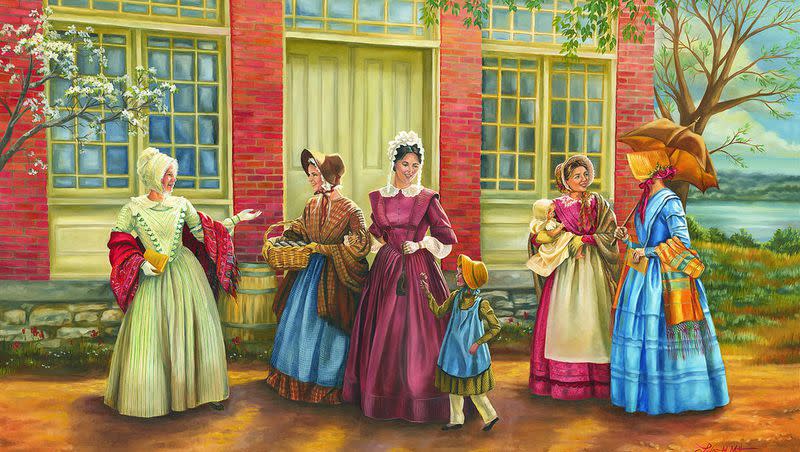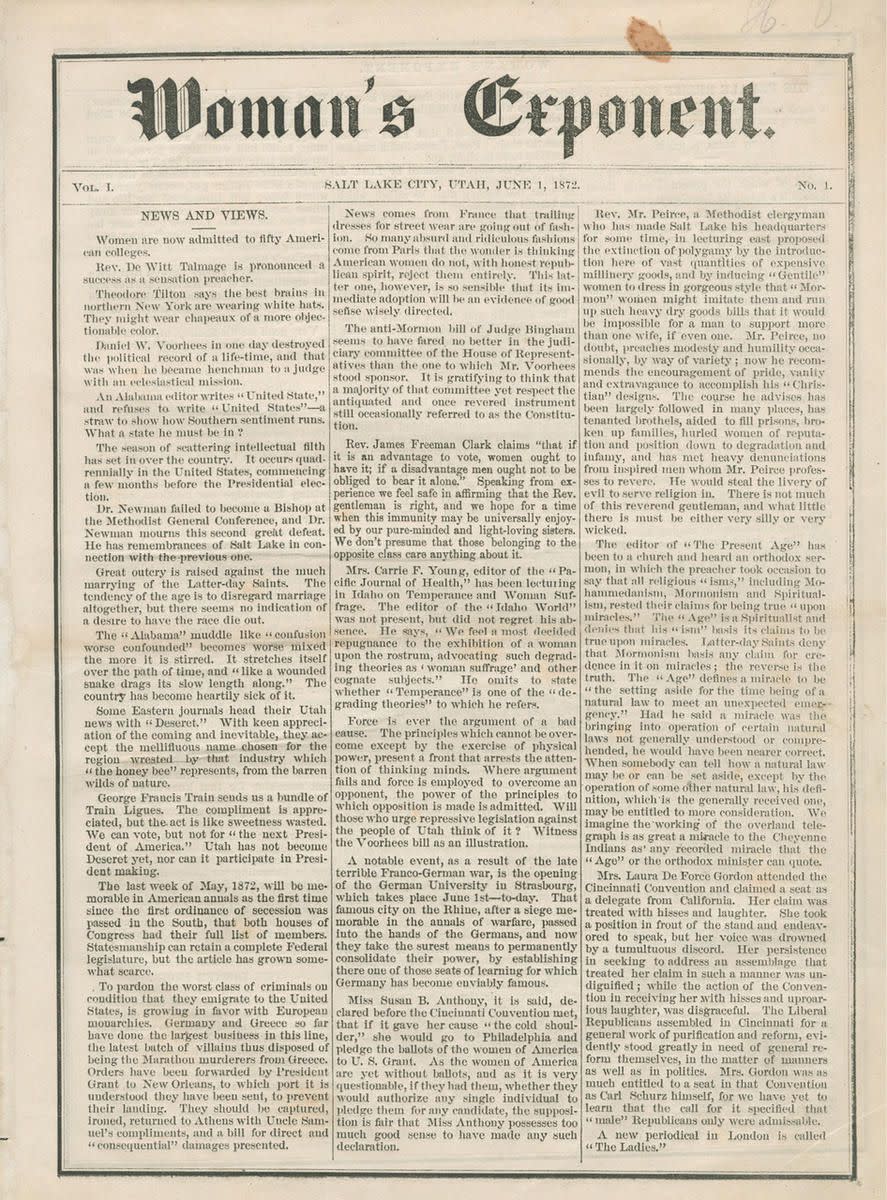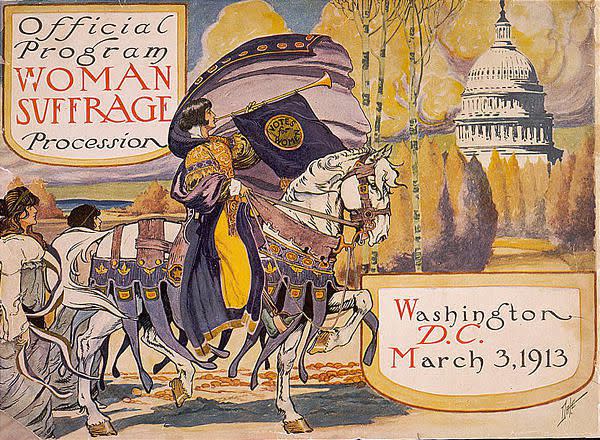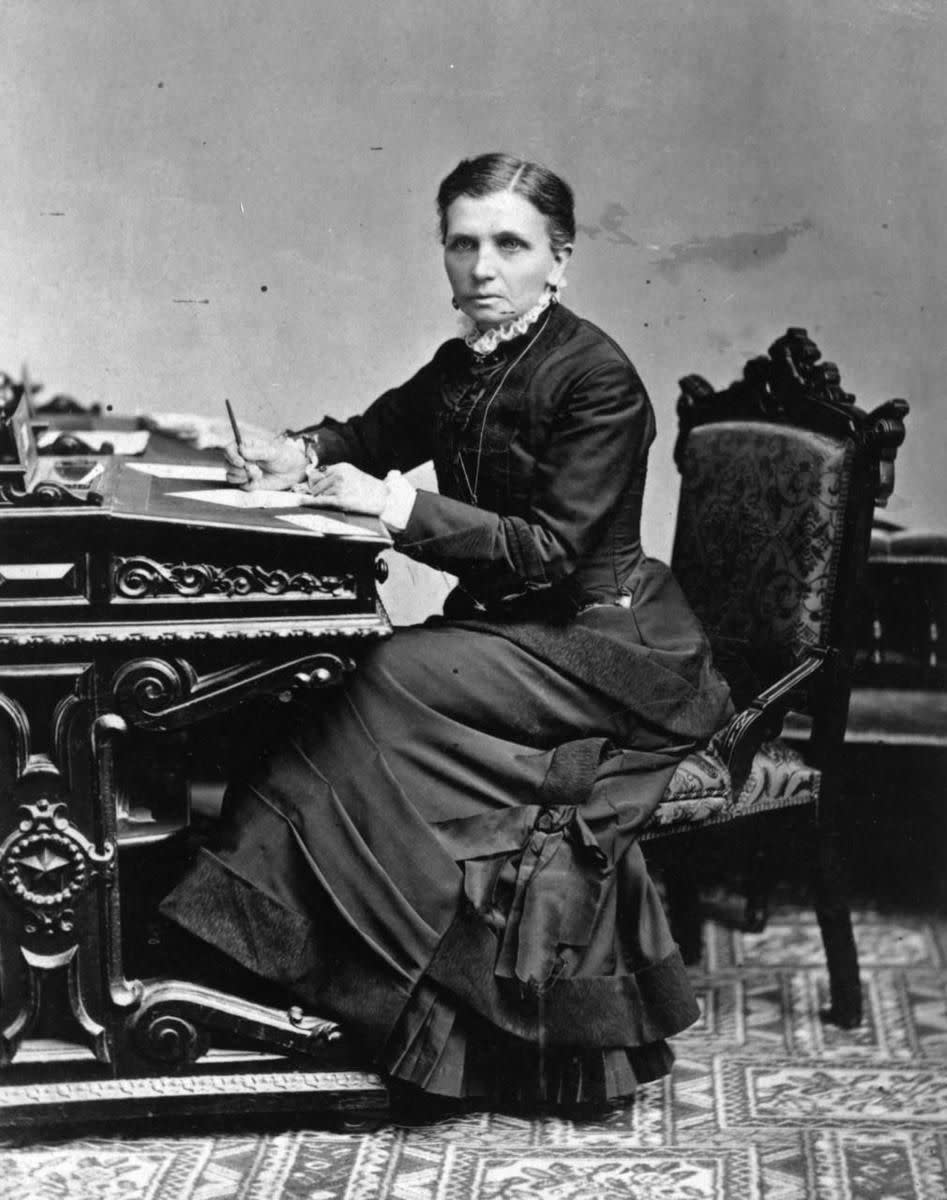International Women’s Day: A history of the first Latter-day Saint women’s newspaper

- Oops!Something went wrong.Please try again later.
- Oops!Something went wrong.Please try again later.
Wednesday is International Women’s Day. Latter-day Saint women were at the forefront of the publishing industry in 19th-century American history. Here’s a look back at the history of the first Latter-day Saint women’s newspaper.
Twenty-two year-old Louisa (Lula) Greene Richards was a budding author who had already penned several poems for the Salt Lake Herald when Edward Sloan approached her about becoming editor of a women’s paper (Woman’s Exponent) in 1871.
Before accepting the offer, Greene Richards consulted with Eliza R. Snow and her great uncle Brigham Young, according to The Church Historian’s Press. Young assigned it to Greene Richards as a mission even though the paper was independent from The Church of Jesus Christ of Latter-day Saints (although the writers often fiercely defended the church in its pages).
The Woman’s Exponent included a number of articles about Latter-day Saint beliefs as well as defenses of plural marriage. The paper also included articles about ideas, culture and politics, especially on issues like women’s suffrage, social reform, morality, the economy and religious freedom.
Previous to the Woman’s Exponent, Greene Richards had edited a weekly paper called Smithfield Sunday School Gazette. This handwritten newspaper had the motto “Remember Thy Creator in the Days of thy Youth” and included literary endeavors and illustrations alike.
Latter-day Saint women have a history of being prolific writers and the history of the Woman’s Exponent is no exception. Here’s a brief history of that newspaper.
Announcing the Woman’s Exponent
The paper was then announced in an April 1872 edition of the Salt Lake Herald as the Woman’s Exponent and the first issue ran on June 1, 1872. The two significant reasons the paper was started were mentioned in the announcement of the paper.
These Utah Relief Society women believed that they were “engaged in the practical solution of some of the greatest social and moral problems of the age, and a powerful interest is manifested throughout the United States, and, it may be said, the entire civilized world, to learn from reliable sources the views honestly entertained by them on these questions.”

But they also thought that the press maligned them and so they wanted to speak for themselves. As editor Greene Richards later wrote, the paper was “An honest exponent of the views of the women of Utah.” Poems, editorials and news articles populated the pages of this newspaper, which was also known for a strong commitment to women’s rights, especially the right to vote.
Throughout its pages, the newspaper also included stories about Latter-day Saint women becoming students of medicine and theological discourses.
Related
How the Relief Society helped 19th century Latter-day Saint women become midwives and doctors
The ‘Utah way’: Latter-day Saint women’s pioneering efforts in voting rights
Louisa Greene Richards as editor
The first issue of the Woman’s Exponent was edited by Greene Richards. Articles in the first issue included an overview of some national news alongside poems about homemaking, parenting, Relief Society updates and more. Snow wrote one of the first articles in the paper and Greene Richards included a salutation, noting that many had already subscribed to the newspaper.
Already appearing in the first issue was a column that persisted for most of the paper’s history with differing degrees of regularity: Household Hints. This column offered tricks and tips on everything from how to clean to recipes for the family to enjoy.
Greene Richards also began the paper’s advocacy for suffrage early. While women had the right to vote in Utah at the time (it would be later taken away), in the Aug. 1, 1872, edition, Greene Richards ran a short editorial named “Why Women Should Vote.”
In a later issue, an author who called herself G. wrote about the necessity of women obtaining an education. She wrote, “But woman should consider that for her as well as for man, there is no end, no stopping point to be found in the acquirement of knowledge.”
Advice for other women often appeared in the paper. In a short article called “In middle life,” Celia Burleigh wrote, “In middle life we hesitate to sit in judgment upon any one; we read slowly and reverently the untranslated scripture of anothers heart; but in youth we are confident, and assign motives and intentions as glibly as children pretend to read nursery tales which they have learned by rote.”
Throughout her five years as editor, Greene Richards edited, wrote and published a significant amount of material. During this time, some of the other articles that were published included a discourse on science and religion asserting that the two worked together in truth, a speech of Snow reiterating how Brigham Young taught that some women should obtain medical educations and many different reports from the Relief Society as well as women’s achievements.
The paper also published reports from the National Woman’s Suffrage Convention along with details of how Utah women could get involved. Suffrage leaders like Elizabeth Cady Stanton would later publish articles in the Woman’s Exponent.

Theological aphorisms and discourses alike found their way into the paper. On June 15, 1877, one author wrote, “Genuine neighborly love knows no distinction of persons. It is like the sun which does not ask on what it shall shine or what it shall warm, but shines and warms by the very laws of its own being.”
On Aug. 1, 1877, Greene Richards had announced her retirement from the paper. She wrote, “My general health is good, but my head and eyes need recruiting, and I have decided to humor them. I have also decided that during the years of my life which may be properly devoted to the rearing of a family, I will give my special attention to that most important branch of “Home Industry.”” She assured her readers that she would continue to contribute.
Emmeline B. Wells as editor: “I believe in women, especially thinking women”
After Greene Richards stepped down as editor, Emmeline B. Wells became editor until the dissolution of the paper.
Wells was born in Massachusetts, according to the Church’s website. She was baptized in a frozen-over brook when she was 14 and she made the trek to Utah. Wells submitted her first article to the Woman’s Exponent in 1873 and by 1875, she was an associate editor.

Later the fifth general president of the Relief Society and an outspoken advocate for women’s suffrage, Wells spent decades as the editor of the Woman’s Exponent.
One of the most significant changes that Wells made was the masthead itself. Underneath the title of the newspaper, Wells added “The Rights of the Women of Zion, and the Rights of the Women of All Nations” in November 1879. During her tenure as editor, Utah women had lost the right to vote due to the federal government disenfranchising them via the Edmunds-Tucker Act. They later got the vote back.
Per Utah’s Women’s History, Wells wrote several articles fighting for women’s suffrage. She maintained friendships with Susan B. Anthony and Elizabeth Cady Stanton through her advocacy. Publishing articles on suffrage as well as later encouraging women to run for public office was a significant part of her tenure as editor.
Wells continued the work of Greene Richards and published 37 years worth of articles and poems that gave women a voice in the public sphere.
Regular contributors to the paper started emerging such as Emily H. Woodmansee, who wrote many poems including “A Mother in Zion.” Woodmansee is likely best known for the hymn “As Sisters in Zion.” A later article described her work, “Her themes are mostly religious and her style lofty.”
The last issue of the Woman’s Exponent was published on Feb. 1, 1914. Wells wrote in her “Heartfelt Farewell”: “The paper has always stood for high ideals, both in the home, in the state, and in the Church; desiring above all things the welfare of the people at large. ... It has surely performed a mission in the midst of Zion for the women of Zion, holding as it does within its leaves the history of their work.”
This final issue also included an article named “Early Literary Women of Utah” written by Wells’ daughter Annie Wells Cannon. This article detailed how the pioneers established a newspaper, the Deseret News, and how several women published in that newspaper among others. The women first listed are Eliza R. Snow (called “our first literary woman”), Emmeline B. Wells, Hannah. T King and Sarah E. Carmichael.
Many more women are mentioned in the article. Cannon concluded, “The paper has been the medium through which many of the Utah writers first came to public attention, both men and women, and has formed in its service the medium through which nearly all those mentioned in this article have expressed their best thoughts.”
BYU Library has digitized every issue of the Woman’s Exponent, making it so that you can explore it for yourself.
The Aftermath
Wells was general Relief Society president at the time of the dissolution of the paper. She served in that calling for the rest of her life. Following the Woman’s Exponent, The Relief Society Magazine was the official publication of the Relief Society until 1970.
The Woman’s Exponent is still considered today one of the most important contributions of Latter-day Saint women to public life.

